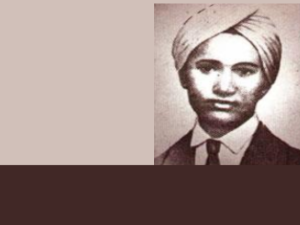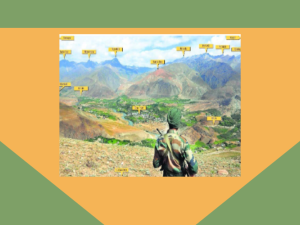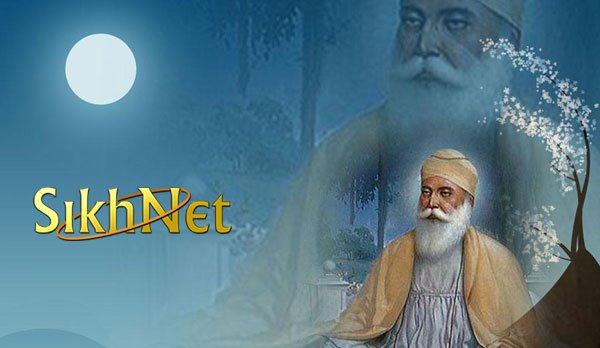
While doing field research on Guru Nanak's travels in Assam, I was astonished to find a monument (samadh) of Loonia Siddh in Nazira within the periphery of an old temple by the side of Dikhow river. I had been told by the local Sikhs that Guru Nanak had visited Nazira and held discussions with Srimant Sankar Dev in the temple on the river Dikhow opposite Gaushala. This place was being looked after probably by an Udasi (follower of Baba Sri Chand son of Guru Nanak Devji) since most of the places related to Guru Nanak's travels had been looked after by Udasis only.
While searching for the history of Guru Nanak's visit to the place and Loonia Siddh's connection with it, I came across lot of evidence. Visit of Guru Nanak to Nazira is recorded in Twareekh Guru Khalsa: "After visiting Ajmeri Ganj, Karim Ganj, Sylleht etc. of Assam he reached Ghargaon a city which was then the capital and was renamed as Nazira after it was included in Sibsagar district. Meeting the King Sagar Sain and converting him from idol worship (worship of Kamakhaya) to Naam worship he went to an island between Brahmaputra and Barni rivers. [1] Giani Lal Singh Sangrur also mentions of Guru Nanak's visit to Ghargaon. [2]
'At Dacca in Bengal …the power of deliverance of Guru Nanak was soon acknowledged around. Smal Nath, Rewa dass, Chander Nath, Narain Dass, Sheikh Ahmed, Nathe Shah, Loonia Siddh etc the saints well known in the area (and are being venerated even till date as seen by the writer) came for discussions with Baba. They showed their numerous talents but finally were swayed by the flow of Gurbani. Seeing no other way out they all became followers of Baba."[1]
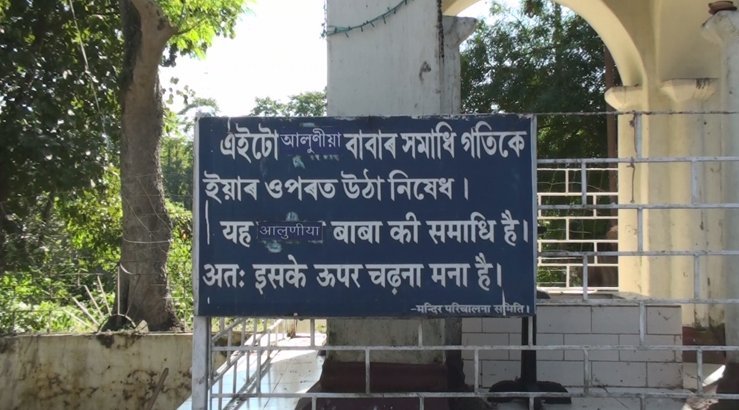 |
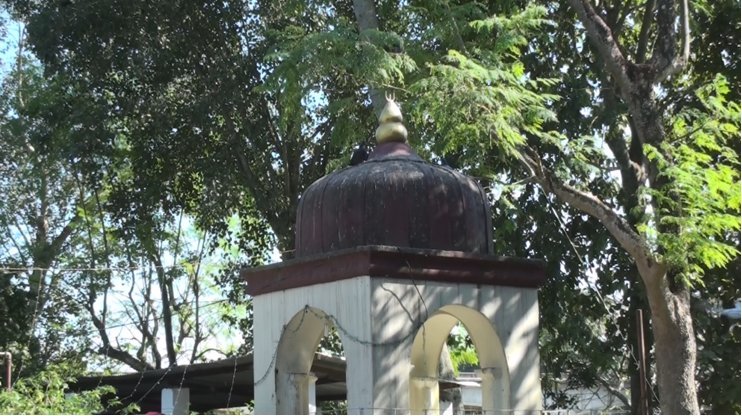 |
| Monument at Nazira in honour of Loonia Siddh |
Loonia's monument at Nazira was venerated by all the locals. I have read Dr Surinder Singh Kohli's account of Loonia Siddh having met Guru Nanak at Dacca. He wrote, "The prominent among the saints who met the Guru were Loonia Siddha, Samal Nath, Rewa Das, Narain Das, Chandan Das and Shiekh Ahmed. They were highly impressed by Guru's teachings." [3] Earlier while visiting Burhanpur, I visited the Gurdwara on the other bank of river Tapti in memory of Guru Gobind Singh's visit to Loonia Siddh and having meals with him. I found the record of this visit in Guru Kian Sakhian [4] as the 'Story of visit of Guru Gobind Singh to the place of Loonia Siddh.'
'A saint of very old age used to stay on other side of river Tapti (near Burhanpur in Madhya Pradesh). Having heard the arrival of Guru (the Tenth Guru) he walked with the help of stick to meet the Guru. He had earlier visited the Guru at Patna while the Guru was in his infancy. Madho Das Bairagi stayed with him for three years after he had left the complex of Augadh Nath Yogi (in Nasik) on his demise. This old man was called Loonia Siddh. He bowed in front of Satiguru (Guru Gobind Singh) Satigur caught him from arm and got him seated along with him and enquired about his well being. They discussed spirituality. Baba Loonia said, "Lord! Please visit my place and purify it". Guruji laughed and said, "O saint! Where ever great men like you are settled, the place is purified". Loonia Siddh again requested, "Lord! That is your place as well. Please have whatever simple food I can offer. It will give me peace." Satigur said, "Siddh Ji! I will be at your place tomorrow morning and will have food with you." Saying this, the Guru went to see him off up to the River bank. Next day, Satigur along with Bhai Daya Singh and other Sikhs crossed the river and went to the place of Loonia Siddh. Saint Loonia looked after Guruji caringly. Having had food at his place, the Guru returned to Burhanpur".
Bhai Vir Singh mentioned this in Sri Kalgidhar Chamtkar [5] and in Sri Dasam Guru Chamtkar [6]. The description of event and the place of his offering of meal to Sri Guru Gobind Singh is nearly the same but the name of Siddh Loonia is given as Yogi Jeevan Das. In Kalgidhar Chamtkar [5], Yogi Jeevan Das gives the details of meeting Guru Tegh Bahadur earlier when requested by Guru Gobind Singh. He said that Guru Tegh Bahadur met him at Dhubri on the bank of Brahmaputra River. "I am the son of rich man who became a mendicant having fell in love with God. I have been roaming from place to place. I practiced Hath Yoga. I read a lot. But this did not give me peace. While roaming, I reached Dacca and met Guru's Sikh Bulaki Das. He was waiting for Guru Tegh Bahadur with eagerness. He prepared a spacious house and high seat for him. His mother prepared a dress for Guru by spinning and weaving it herself with the hope that he will come and she will offer the dress to the Guru. In their company, I left Hath Yog and got in to meditation. I also developed eagerness to meet the Guru. They kept waiting for Him at Dacca. I guessed that the Guru will first reach Dhubri. Being impatient to meet the Guru, I reached there. Guruji came to Dacca first and redeemed his dedicated Sikhs Bulaki Das and his old mother. He also prayed about me to the Guru. I met the Guru at Dhubri and watched the Guru in the waves of Brahmaputra as I am watching you in the waters of River Tapti. The Guru blessed me with Nam Dan. My intellect was dull, mind dirty and body hard which has now changed by your reviving name in it again. I remained with Guru Tegh Bahadur in Assam till he was there and enjoyed his presence. Before leaving Assam he ordered me to move to South and do meditation in a lonely place. I enquired from the Guru as to why he was sending me to the South while he himself was going to North. The Guruji said, "Do not worry I will meet you there in a different life." Now you have fulfilled the promise. "When did you meet him in Assam?" Guru Gobind Singh asked the Siddh. I met him in Samwat 1723 (1666 AD). It was the time when news of your birth reached Dhubri. I was present when this news was greeted with a volley of gun fire and beating of drums. All the Sikhs and army of Raja Ram Singh celebrated the event."
This researcher has visited the place on Tapti in Burhanpur where Loonia Siddh offered food to Guru Gobind Singh and also visited the place at Dhubri where he met Guru Tegh Bahadur and the news of Guru Gobind Singh's birth was received and celebrated. He recently visited the place near Nazira where Loonia Siddh was laid to rest. Loonia Siddh might have moved to this place, probably close home and looked after the place of Guru's visit in his last days.
The location of burial place of Loonia Siddh is just by the side of Dikhow river near Nazira Gau-shala.
 |
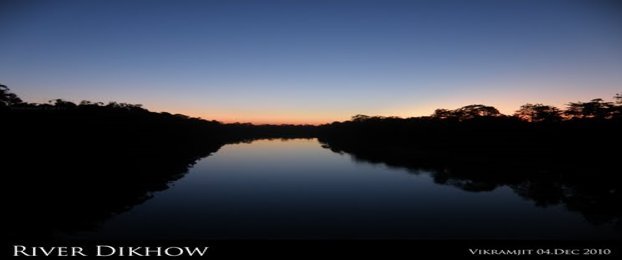 |
| Dikhow River |
Nazira is a town and a municipal board in Sivsagar district in the Indian state of Assam. It is located at 26.920N 94.730 E. It has an average elevation of 132 metres (433 feet). It is a historical town on the bank of River Dikhow and is around 18 km from Sivasagar city, 3 km from Simaluguri Jn. and 78 km from Jorhat Airport. It is Sub-divisional Head Office of Nazira Sub-division. The HQ of ONGC, Assam Asset, a Maharatna E&P company is situated in Nazira. Nazira is surrounded by huge tea estates. It was an important place during the regime of Ahom Kingdom. Nearby Gargaon was the capital of Ahom Kingdom over a long period. Nazira is commonly believed to get its name from two Assamese words 'Naw' and 'Jeera', which means "resting place of boats". During the regime of Ahom kingdom, boats used to rest in that area after long journey via Dikhow river. The nearby Gargaon was a capital of Ahom kingdom. The historian Sarbananda Rajkumar states that 'Nazira' is a Tai (Ahom) word: Na means Land, Zi-Inclined & Ra-Much. So, Nazira means a much inclined land.[7] However Sardar Harpal Singh in his interview attached as appendix 1 mentions that it was originally Nanak zirah meaning Guru Nanak held discussions with Srimanata Sankar Dev and the King Suhungmung (1497-1539) also known as Dahingia Raja at the place. This is the reason that the teachings of the two i.e., Guru Nanak and Srimanta Sankar Dev are nearly the same.
 |
| Sibsagar and Nazira areas |
The important places of Nazira were Ganak Village and Nazirahat. Being in the vicinity of the Dikhow river and the capital of Ahom kingdom Gargaon, it is said that boats used to rest in this place after their long journey through the river. The Kareng Ghar a palace from the medieval period build by King Rajeshwar Singha, a ruler of the Ahom kingdom stands as a testimony of the bygone era. During the British rule, tea plantations were started in and around Nazira like the other parts of upper Assam. Nazira was the headquarters of famous Assam Tea Company. [8]
It has a humid subtropical monsoon climate like the rest of Assam. It has a long rainy season starting with pre-monsoon showers in the months of April, which signals the onset of spring. The real deluge starts in June, which continues up to the month of September. As of 2001 India census, [9] Nazira had a population of 12,466. Nazira is mainly inhabited by Ahoms followed by the Assamese Muslims, Brahmins, Koch, Kalitas, Deories and Kaibarta constitute the rest of the portion of the demographic chart. Besides Nazira also has a sizeable population from the tea tribes community, who were brought as labours from central India by British for Tea plantations.
The monument at the place of burial of Loonia Siddh at the bank of river Dikhow points to the place of Guru Nanak's visit since the Guru's followers maintained the place of Guru's visit wherever the Guru went and Nazira was such a place of Guru's visit.
------------------------
References
[1] Gyani Gian Singh, Twareekh Guru Khalsa originally of 1891 AD later published by Bhasha Vibhag Punjab, Patiala, p.118
[2] Giani lal Singh Sangrur, 1940, Guru Khalsa Twareekh, Ludhiana, Lahore Book Shop, 3rd edition 1955, p. 70
[3] Surinder Singh Kohli, Dr., 1977, Travels of Guru Nanak, 3rd edition, Punjab University, Chandigarh, p.40
[4] Sarup Singh Koshish, 1986, Guru Kian Sakhian edited by Piara Singh Padam and Gyani Garja Singh and publioshed by Kalam Mandir Patiala (p. 185)
[5] Bhai Vir Singh , 2004, pp. Sri Kalgidhar Chamtkar, Bhai Vir Singh Sahit Sadan, New Delhi, 335-341
[6] Bhai Vir Singh, July 2009, Sri Dasam Guru Chamtkar, Bhai Chatar Singh Jiwan Singh, Sri Amritsar, pp.597-598
[7] Rajkumar Sarbananda, 2000, Etihase Suaura Chashata Bacharor, Page 272,First Edition December,ISBN-81-7339-308-7 Banalata, New Bazar Dibrugarh-1
[8] Antrobus H.A 1957, The History of The Assam Company (1839-1953),.; Privately printed by T.A. Constable Ltd, Edinburgh.
[9] Census of India 2001: data from the 2001 census including cities, villages and towns (provisional Census Commission of India, Archived from the original on 2004-06-16, Retrieved 2008-11-01. Read more: http://www.assams.info/places/nazira-town#ixzz3R1cKxzBx http://www.assams.info/places/nazira-town
Other links:
Guru Nanak's Unknown Visit to Singapore
Guru Nanak Visits Empire of 100 Islands


